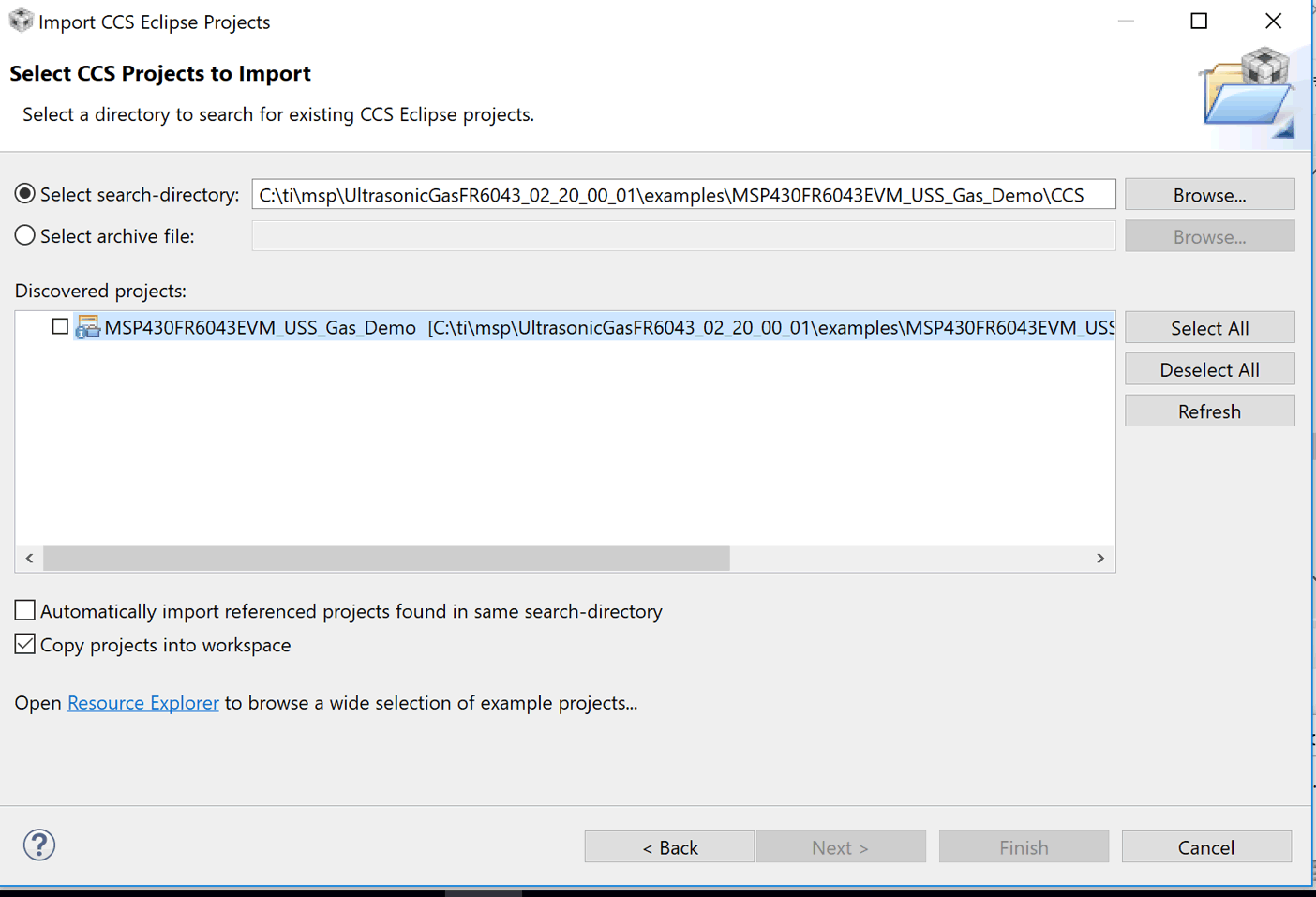TIDUEJ6A January 2019 – July 2022
- Description
- Resources
- Features
- Applications
- 5
- 1System Description
- 2System Overview
- 3Hardware, Software, Testing Requirements, and Test Results
- 4Design and Documentation Support
- 5About the Authors
- 6Revision History
3.2.1.2.1 Using Code Composer Studio IDE
- Open or create a workspace.
- Import the application project by selecting Menu → Project → Import CCS Projects, and then select the following path: <USS Flow Meter Library folder>\examples\USSLib_GUI_Demo\CCS\ (see Figure 4-13).
 Figure 4-13 Import Project to CCS
Figure 4-13 Import Project to CCS - Build the project (Ctrl+B).
- Download the code to the device (F11).
- Close the debugger. It is also possible to execute or debug the application, but this design guide only shows the standalone execution.